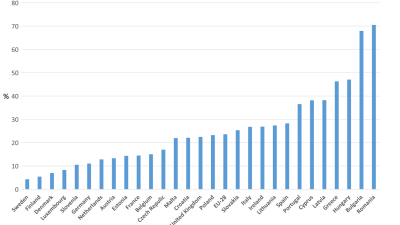A new model of growth, inequality and poverty has been developed that allows forecasts to be made of both the scale and location of future poverty under different assumptions. The model is described in a paper by researchers for a United Nations development forum based in Brazil.
Key findings
- It is plausible that global poverty – defined as living on less than either $1.25 or $2 a day – will have reduced substantially by 2030; and that $1.25 poverty could be very low by that time. However, this depends on economic growth and inequality trends.
- It is 'startling' just how much difference changes in inequality could make to the future of global poverty – to both the numbers of poor people and the costs of ending poverty. The difference between poverty estimated on current inequality trends and a hypothetical return to 'best ever' inequality for every country could be an extra 1 billion poor people (living on $2 a day), in one scenario considered by the researchers.
- Where the world’s poor people will be located also depends on changes in inequality to a certain extent, as well as the methods used to estimate poverty. There is 'surprisingly little compelling evidence' that aid should be refocused on low-income fragile states on the basis that global poverty will be based in such countries.
- Even the 'long' list of fragile states (low and middle income) would only account for the vast bulk of global poverty in a minority of scenarios. It might be more useful instead to inform policy with an understanding of the range of possible outcomes across a greater variety of potentially relevant country classifications. There is some evidence that a ‘multi-speed world’ categorisation, perhaps in combination with income category, might be useful as a way to identify and prioritise countries likely to have difficulty reducing poverty.
Source: Peter Edward and Andy Sumner, The Future of Global Poverty in a Multi-Speed World: New Estimates of Scale, Location and Cost, Working Paper 111, International Policy Centre for Inclusive Growth
Link: Working paper



 PSE:UK is a major collaboration between the University of Bristol, Heriot-Watt University, The Open University, Queen's University Belfast, University of Glasgow and the University of York working with the National Centre for Social Research and the Northern Ireland Statistics and Research Agency. ESRC Grant RES-060-25-0052.
PSE:UK is a major collaboration between the University of Bristol, Heriot-Watt University, The Open University, Queen's University Belfast, University of Glasgow and the University of York working with the National Centre for Social Research and the Northern Ireland Statistics and Research Agency. ESRC Grant RES-060-25-0052.






